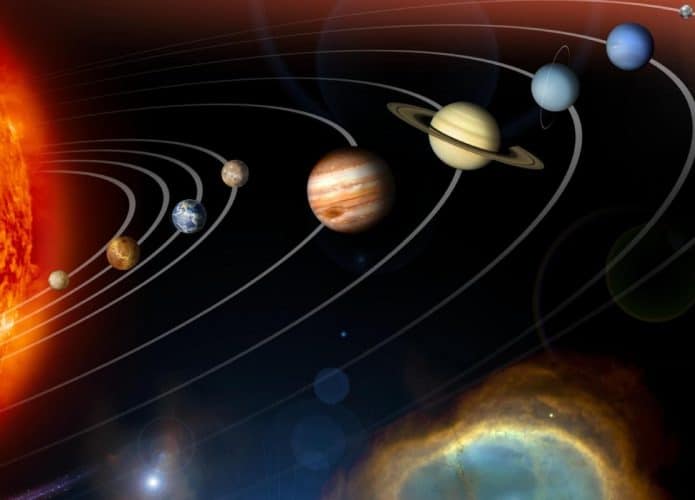Among the many curiosities we have about space, how do we measure the length of a day on the planets of our solar system? First, it is necessary to clarify that scientists rely on the time it takes the planet to complete its rotation around its axis to measure the length of a day.
The faster the planet rotates, the shorter the length of the day and night. For example, a day on Mars is 24 hours and 37 minutes (about the same time on Earth), while a Martian year is 687 days, almost twice as long as an Earth year.
Read more:
Rotation is the movement made by planets around their axis. It is as if the planet revolves around itself. It is one of the two main movements that planet Earth makes. The other movement is motion, which is the movement carried out by the planets around the sun.
The rotation alters periods of sunshine in areas of the planet. As we know, this movement on Earth lasts about 23 hours, 56 minutes and 4 seconds.
Our solar system is a collection of celestial bodies orbiting the Sun, its main star. It is a complex astronomical structure located in the outer arm of the Milky Way Galaxy.
Before calculating the length of a day on planets, let's explore more about the solar system, which consists of:
- Eight planets: Mercury, Venus, Earth, Mars, Jupiter, Saturn, Uranus, and Neptune
- Celestial bodies, such as comets, asteroids and meteorites (celestial bodies orbiting the Sun, are small rocky or metallic objects moving in outer space. Meteorites are much smaller than asteroids and range in size from tiny grains to objects up to one meter across).
- Dwarf planets such as Ceres and Pluto
The sun shines for everyone
The Sun is the largest component of the Solar System, accounting for more than 99.85% of its total mass.

The solar system currently consists of eight planets: Mercury, Venus, Earth, Mars, Jupiter, Saturn, Uranus, and Neptune. The so-called rocky planets, the ones closest to the Sun, are mostly made of rock. Gas planets located far from the Sun are composed of different gases.
The Sun's energy is generated by the fusion of hydrogen into helium, so we have an approximate duration of one day on our neighboring planets:
- Mercury: 58 days and 16 Earth hours
- Venus: 243 Earth days
- Mars: One Earth day and one hour
- Jupiter: 10 Earth hours
- Saturn: 11 Earth hours
- Uranus: 17 Earth hours
- Neptune: 16 Earth hours
Venus has the longest day in the solar system, at 243 Earth days. The days of Saturn, Neptune, and Uranus are shorter than those of Earth.

The strange thing about Venus is that one Venus cycle takes 243.0226 Earth days. This means that a day lasts longer than a year on Venus, which completes its full orbit around the sun in 225 Earth days.
Jupiter is the planet with the shortest days and nights, with a cycle of day and night every 9 Earth hours and 56 minutes (on average).

“Hardcore beer fanatic. Falls down a lot. Professional coffee fan. Music ninja.”

:strip_icc()/i.s3.glbimg.com/v1/AUTH_59edd422c0c84a879bd37670ae4f538a/internal_photos/bs/2024/Q/F/WBipAXRwqO8rdLAQtPnA/aranhas-esa.png)
:strip_icc()/s03.video.glbimg.com/x720/12552510.jpg)




More Stories
The European Space Agency's probe detects “spiders” on Mars Sciences
UFRJ is Africa's Ambassador for Science – Conexão UFRJ
China releases the most complete geological map of the Moon; look at the pictures